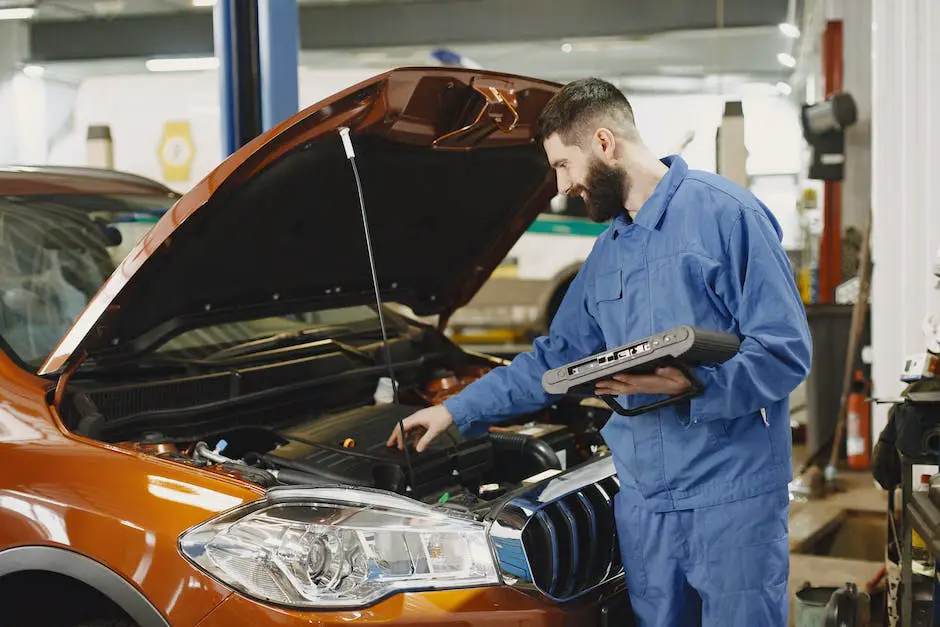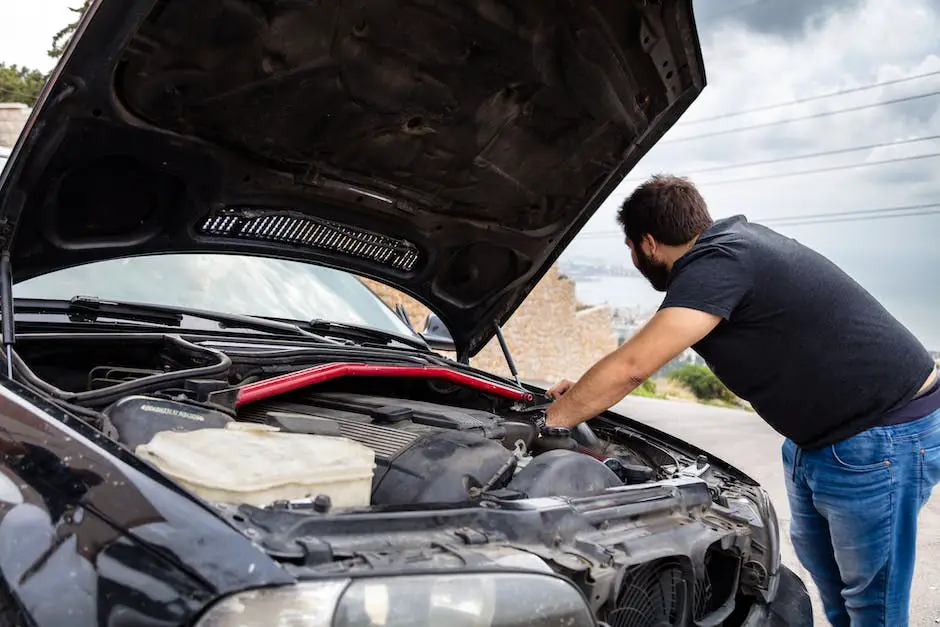In today’s fast-paced lifestyle, having a car is essential for quick and efficient mobility. However, owning one involves a certain responsibility – understanding its basic mechanisms, maintaining it regularly, troubleshooting common problems, and dealing with repairs. From gaining a grasp of engine operations, the cooling and heating system, the brake system, and the electrical network, to committing to a regular maintenance schedule, becoming an informed car owner leads to a vehicle’s better performance and longevity.
Understanding Basic Car Mechanisms
Understanding Basic Car Engine Operations
The car engine, or internal combustion engine, converts fuel into mechanical energy. This happens in a series of small steps. The four phases of engine operation include the intake, compression, power and exhaust strokes. During the intake stroke, the air-fuel mixture is introduced into the engine cylinder. The compression stroke compresses the mixture, leading to the power stroke where a spark plug ignites the mixture to produce power. Finally, the exhaust stroke expels spent gases. Most modern cars use a four-stroke engine, performing these steps in succession.
Cooling and Heating Systems in Cars
Your vehicle’s cooling system is vital to the longevity of your engine’s performance. It’s responsible for regulating the temperature of your engine to prevent overheating. A typical cooling system consists of a radiator, thermostat, coolant, water pump, and fans. As the engine burns fuel, it generates heat. The cooling system circulates coolant through the engine, drawing heat away. The heated coolant then passes through the radiator, where the fan helps dissipate the heat before the coolant is recirculated.
The heating system in a car is directly related to the cooling system and primarily uses the excess heat from the engine. The heater core located inside the car is basically a mini-radiator that uses the hot coolant from the engine to warm up the interior of the car during cold weather.
Understanding the Brake System
Each vehicle’s brake system plays a crucial role in controlling the car’s motion and ensuring safety. The primary components of the brake system include the brake pedal, master cylinder, brake lines, calipers or drums, and brake pads or shoes. When you press the brake pedal, hydraulic pressure from the master cylinder is transmitted through brake lines and activates the calipers or drums, which press the brake pads or shoes against the spinning wheels, slowing down or stopping the vehicle. The brake pads are designed to bear a lot of friction, but they wear out over time and should be replaced occasionally.
Basic Car Electrical System
A car’s electrical system consists primarily of the battery, alternator, and starter motor. It controls nearly all the electronic components in your vehicle, including headlights, window controls, etc.
The battery supplies electrical power to the starter and other electronic accessories in the car when the engine isn’t running. When the engine is running, the alternator takes over the job of supplying power. It also recharges the battery. A failing alternator could result in a vehicle running solely on battery power, which it isn’t intended for prolonged operation, thereby the car might break down.

Regular Car Maintenance
Understanding the Importance of Regular Car Maintenance
Regular car maintenance is crucial for the longevity and performance of your vehicle. It is necessary to prevent breakdowns and costly repairs by discovering issues in the early stages before they escalate into serious problems. It is also important for safety reasons; a well-maintained car is less likely to have a malfunction that could result in an accident.
Methods for Regular Car Maintenance
Here are some critical procedures for regular car maintenance.
Oil and Filter Change
It’s recommended to change the engine oil and filter every 3,000 to 5,000 miles, varying depending on your vehicle’s make and model and the type of oil used. Regular oil changes help to reduce wear and tear on the engine by keeping parts well-lubricated and preventing the buildup of harmful substances within the engine.
Brake Inspection
Brakes should be checked at least once a year to ensure they’re still working properly. Brakes wear out over time and need to be replaced for safety reasons. Indicators of a possible brake problem include a squealing or grinding sound, the vehicle pulling to one side when braking, or the brake pedal feeling soft or spongy.
Tire Rotation
Tires should be rotated every 5,000 to 7,000 miles to prevent uneven wear and tear. Regular tire rotations can prolong the life of your tires, provide a smoother ride, improve gas mileage, and increase overall safety by improving the vehicle’s handling.
Checking Fluid Levels
In addition to oil, there are several vital fluids in your car, including coolant, power steering fluid, brake fluid, and transmission fluid. These should be checked regularly as they play a crucial role in your car’s operation.
Creating a Schedule for Regular Car Maintenance
To keep track of when each type of maintenance is due, create a schedule based on your car’s manufacturer’s recommendations. These recommendations can usually be found in the vehicle’s owner’s manual. You may want to set reminders on your phone or in your calendar to ensure that no maintenance is overlooked.
Professional Inspection
In addition to this self-maintenance, getting your vehicle inspected by a professional mechanic periodically is highly recommended. They can identify and fix problems that might not be noticeable to untrained eyes.
Conclusion
By following this regular car maintenance guide, you can help to ensure that your vehicle remains reliable and safe for the longest possible time. Proper car care can save you a significant amount of money, time, and inconvenience in the long run.

Troubleshooting Common Car Problems
Identification of Common Car Problems
The first step in troubleshooting common car problems is to identify what exactly the problem is. Some signs might be obvious, such as a flat tire or leaking oil. Others may require some investigation, like an unusual noise from the engine or a difficulty starting the car. A basic understanding of car parts and their functions is helpful in determining what the problem might be.
Oil Leaks
Oil leaks happen when the seals and gaskets that prevent oil from spilling begin to deteriorate. One of the earliest signs of an oil leak is spotting a puddle of oil underneath your car. When you notice this, immediately check your oil level using the dipstick. If it’s lower than the recommended level, refill it with the appropriate type of oil for your car. To permanently fix this, however, you will need to have the leaking seal or gasket replaced by a professional mechanic.
Battery Issues
Car battery problems can manifest in different ways, such as the car not starting, the headlights dimming, or electrical components not working. One of the most basic troubleshooting strategies is to check the battery terminals. If they are corroded or loose, cleaning or tightening them could fix the problem. If this doesn’t work, you may need to test the battery’s voltage using a multimeter. A normal, fully-charged car battery should read about 12.6 volts. If it’s significantly less, the battery may need to be charged or replaced.
Tire Punctures
Tire punctures, or flat tires, are obvious when the tire is completely deflated. However, slow leaks can be harder to detect. One common method of identifying a slow leak is to inspect the tire closely for any embedded objects like nails or glass. If there’s none, you can use the soap bubble method. This involves inflating the tire, then spraying a soapy water mixture all over it. If there’s a leak, you will see bubbles forming from the escaping air. A puncture can be temporarily fixed by using a tire plug kit, which basically includes a plug that you insert into the hole. But for a more permanent solution, you’ll need to take your tire to a professional for repair or replacement.
By learning about these common car problems and knowing the basic troubleshooting steps to address them, you become more prepared and less stressed when these issues arise. As always, when in doubt, it’s always best to consult with a professional mechanic.

Dealing with Car Repairs
Understanding Car Repair Basic Tools
Car repair requires some basic tools. First, a set of good quality screwdrivers of varying size and type (flat head and Phillips) is essential. Adjustable wrenches and a set of sockets are also important. Pliers, a breaker bar for extra leverage on tight bolts, and a car jack and stands are other must-haves. For diagnosing issues, a multimeter that measures electrical values and a code reader for engine diagnostics are beneficial. However, ensure to follow safety standards when using these tools, like using gloves and safety goggles.
Knowing About Car Parts and Their Quality
Using high quality car parts makes a significant difference in the longevity and reliability of those parts. While it may be tempting to save money by purchasing cheaper components, these will likely wear out faster and may not provide optimal performance. If you must replace a part, take the time to research the prospective parts manufacturers and choose one with a good reputation for quality. Parts should conform to your car’s year, make, and model.
Handling Minor Repairs
Many minor repairs can be done alone if you have a bit of time and patience. Replacing wiper blades, air filters, and headlights are tasks most car owners can handle. Changing your oil, replacing a car battery or a flat tire are also doable with some basic knowledge. For example, in changing your tire, you need to raise the car using a jack, loosen the lug nuts with a lug wrench, take off the old tire and replace it with the spare, and then finally tighten the lug nuts again.
Knowing When to Consult with Professionals
While it’s rewarding to do minor repairs, there are some car issues that should be handled by professionals. If you have problems with your transmission, brakes, the engine, or any electrical faults, it’s usually best to consult with a professional. Issues tied with the emission systems, air conditioning repair, or power steering are other areas probably best left to experts.
Dealership vs. Independent Repair Shop
When in need of a car repair, you have the option to visit a dealership or an independent repair shop. Dealer repair departments often have specific expertise and proprietary knowledge about your exact vehicle. However, they can be pricy compared to independent shops. Independent repair shops are usually less expensive and may offer a more personal relationship, as well as quicker service. They can be an excellent choice for routine maintenance and repairs. However, the quality of service can vary greatly from one independent shop to another, so it’s crucial to find one that is reputable.
Decision Making in Dealing with Car Repairs
When you need a car repair, the best course of action is to understand the issue as much as you can and then weigh your options. Consider the cost of parts and services, but also the reliability, and potential impact on your car’s longevity or resale value. Research, learn from others’ experiences, ask for professional advice when needed, and make informed decisions that match your budget, skill level, and time constraints.

Likewise, acquiring skills on troubleshooting common car issues, understanding the process of car repairs, and being aware of the options available to us, empower us to make informed decisions for our vehicle’s welfare. It’s not merely about minor repairs that we can personally manage, or deciding between taking our car to a dealership versus an independent repair shop. It’s about gaining a comprehensive understanding of our vehicle, which essentially is an investment, ensuring its maximum life and optimal performance. All these ultimately make us not only better car owners but savvy ones at that.

Leave a Reply